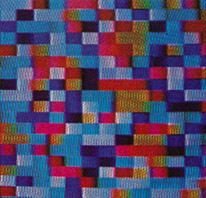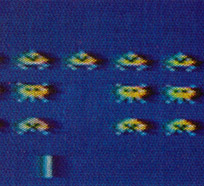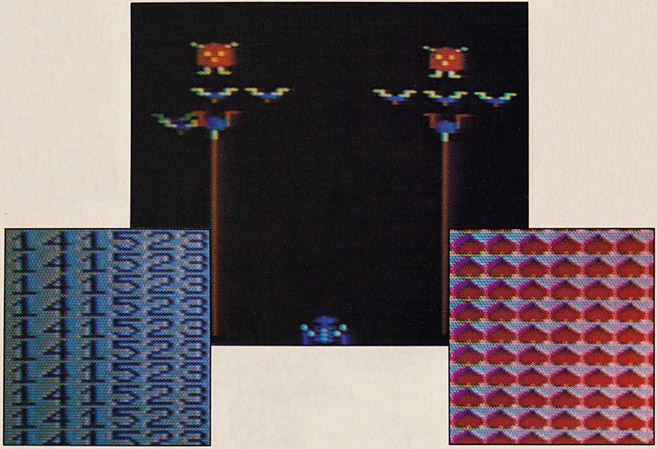
Computer Workout
Give Me VIC-tory!

A lot of games enthusiasts are having trouble making a decision about that second purchase. A bigger, better game system? A personal computer? A machine that combines the features of both? And what about price? If you’re asking yourself questions like these, take a long hard look at the VIC-20 from Commodore. It could answer them all.
Right now the VIC-20 is selling for from $179 to $199-less than most game consoles. It has some impressive graphics, fascinating games quite different from anything on conventional game systems, and 5K of memory. Though that may not sound like a lot, the VIC-20 is surprisingly powerful—and the memory is expandable. But most importantly. the VIC-20 is a computer, and that means programming power.
Solving even the simplest problems becomes an intensely gratifying experience when you’ve written the program yourself. The instruction manual—an especially good one—gives some samples, but from then on, the sky’s the limit.

One of the best features of the VIC-20 is its built-in VIC BASIC which means you can start programming as soon as you turn it on. VIC BASIC is almost identical to conventional BASIC, but provides you with all kinds of programming shortcuts using character keys for special functions.
The keyboard itself is very similar to a conventional typewriter’s and has a good touch and feel. With the special character keys and the four function keys, the machine provides up to eight programmable functions. And while writing your own programs is challenging and fun, games players will be happy to know that play on the VIC-20 is just as exciting.
There are a couple of dozen games available from Commodore, retailing for from $29.95 to $39.95, including Jupiter Lander, Radar Ratrace, Slot, Poker and Sargon II Chess. New entries include arcade favorites like Omega Race and Gorf and more are on the way.
Some of the games use the keyboard only, while others let you use a joystick-the same one that’s compatible with the Atari VCS. The game carts fit into a slot at the back of the machine, and one problem is they’re hard as the devil to plug in. One solution to this tight fit is an expansion board plugging into the slot.

Some games and programs are available on tape cassettes, which makes them a lot cheaper. The company has some “six-packs” of cassettes priced so the average cost is about $10 per tape. Some of these are excellent, while others need help. Nevertheless, to use any of them, you’ll need a VIC cassette unit with a special plug that fits into the back of the VIC machine. It’s a worthwhile investment.
Games are also available from United Microware Industries (UMI) and Thorn EMI. Now that the VIC is becoming so popular, more people are getting into the VIC games business. Cartridges like River Rescue from Thorn EMI and Meteor Run from UMI add some extra zap to your game play.
In general, most VIC games are for one player. The two-player games use the keyboard only, and this can be awkward, as each player has to lean over to enter his or her own gameplay instructions. A case in point is Commodore’s Casino Blackjack. While it’s one of the better blackjack games I’ve seen, generally only one player can sit at the VIC and she or he has to enter bet amounts and actions dictated by the second player. But in spite of this shortcoming, it’s still head and shoulders above other home video blackjack games.

One of things you can do with the cassette unit is save programs you write so you can run them later. It uses short, cheap cassettes—in fact, the shorter the better: Using tapes longer than C-60 can strain the cassette machine’s motor. And, since the cassette recorder draws power from the VIC, this can also lead to problems in the VIC’s own power supply. You can buy C-30’s at Radio Shack for about 70 cents apiece in three packs. They work very well and each cassette will hold. several programs.
One of the most exciting features of the VIC-20 is its superior graphics, and simple programs in the instruction manual let you try some screen graphics right away. One program, for instance, fills the screen with a random patchwork of colored squares which make up a colorful kaleidoscopic display.
Another VIC program lets you create a rather simple “bird”—a large dot with wings—and then lets you animate it. Other short programs show you how to create a bouncing ball and then vary the animation using “POKE” and “PEEK” commands. By the time you’ve gotten a third of the way through the manual, you will have already learned how to map screen locations.
Error In Line 210
The VIC isn’t bashful about telling you if something’s not right. When you try to run a program that needs some debugging, it will flash such messages as “SYNTAX ERROR IN LINE 210,” which means you ought to go back and take another look at that line in the program. Very often, the error simply consists of having misspelled a command or having put in a “;” when a “:” was called for.
In spite of the VIC’s many advantages, there will come a time when you want to add more capability to the machine and plug-in memory expansion of 5K, 8K or 16K is available for just this contingency. There’s also the Commodore Programmer’s Aid—a plug-in cartridge that provides a number of additional commands and instructions for writing programs.
Probably the most useful single accessory for the VIC is the cassette recorder. This is the “poor man’s” mass storage. The cassette will do nicely until you find your needs getting more serious. It lets you save programs that you write, files of data, information and addresses.
The printer is another story. The one printer made for the VIC is Commodore’s graphic printer, which costs $395. This isn’t likely to be discounted by very much in the stores. It’s a dot-matrix printer which doesn’t give good letter-quality printing if you happen to be interested in using VIC for word processing. The VIC printer plugs into the computer’s printer port, which is a European DIN-type jack. It’s very difficult to make other printers run from this particular port.

Game/Expansion Port
The expansion chassis is a circuit board that plugs into the VIC’s game/expansion port. On the chassis are three or more connector strips that let you plug your program or memory expansion cartridges into the board, rather than into the back of the VIC. This way you can use more than one plug-in cartridge at a time. This feature is especially helpful if you want to, say. plug in a 16Kmemory expansion cartridge and the Programmer’s Aid cartridge at the same time. It also lets you “stack” smaller expansion memory modules that you may have purchased one at a time.
A useful plug-in comes from Quantum Data. Called the “40/80 Video Combo,” this expansion device gives you more characters on each line on the video screen. It will give you a choice of 40 or 80 columns (the VIC normally provides 24 characters per line), and will let you type upper and lowercase letters. If you’re doing programming or editing, it’s a must.
All these add-ons use electrical power, and if you plug in two or more at the same time, you could burn out the VIC’s power supply. For this reason, there are several power supply add-ons available.
The trouble is, by the time you finish with all of this expansion—much of it just to add to the memory size—you may have spent over $600, including the cost of the VIC. The VIC-20’s bigger brother, the Commodore 64, can sidestep all of this if you want to spend $599 right off the bat. This VIC look-alike has 64K of memory already built in, which is quite a lot for the home computer. There are times when that large-size memory comes in handy.
In addition to the games on cassette tape, Commodore and other software companies make business and home programs of many types. You can run programs that range from simple biorhythm calculations to loan/interest tables that will compute a 30-year mortgage. There’s a planning calendar that not only lets you plan ahead, but will also call up the calendar for any month of any year within the last century. And there’s Commodore’s $16.95 Programmer’s Reference Guide, a detailed second volume to the instruction book that comes with the computer. Once you get over the first excitement of playing VIC games, the book is a must for serious home computing.
One of the most appealing things about the VIC-20 is that it’s fun for the whole family. My wife, a professional programmer who spends her days with a $150,000 Data General Eclipse, lately has been spending her evenings with the VIC and is frankly amazed at how much is in that little package-for under $200. And my 80-year-old father-in-law has a ball playing Slot. “Just like Atlantic City!” he keeps saying.
The VIC can’t replace a good game console, not with the range of software available for the major systems. But when it comes to quality games and high-level screen graphics, as well as the fun of home computing, the VIC is really a fascinating little machine.
Source Pages





